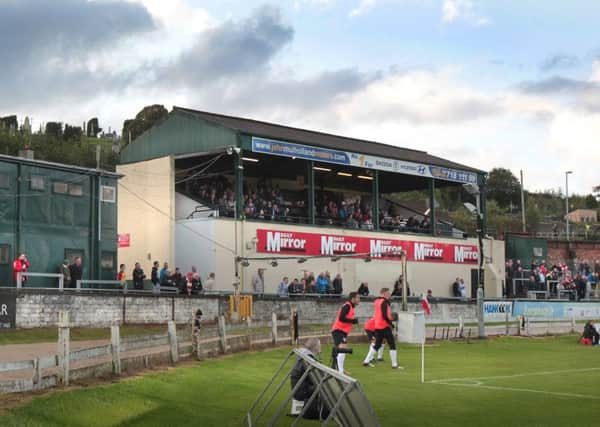Glentoran stand coming down from next week


Part of the Lonemoor Road wall at the Brandywell is also to be knocked down for health and safety reasons.
A Council spokesperson advised that the work is expected to take up to five weeks to complete and local residents and user groups have been briefed by the Council on the nature of the works.
Advertisement
Hide AdAdvertisement
Hide AdThe spokesperson added that the development plans for the Brandywell were included in the Council’s Capital Investment Plan that was approved by Council last month. Council is currently working to advance with the next stage of the process on this important investment and regeneration project, in close partnership with funders and key stakeholders.
The Council spokesperson added that Council remains committed to the project as part of its ongoing work capital investment programme.
The Glentoran stand, now one of the oldest structures in the Irish Football League originally stood at the Oval football ground in Belfast (hence its name) and was constructed by the legendary Glasgow born Engineer Archibald Leitch. The stand was purchased and disassembled and reconstructed at the Brandywell in the early 1940’s.
Born in Glasgow, Leitch’s early work was on designing factories in his home city and in Lanarkshire, with the sole surviving example being the Sentinel Works at Jessie Street, Polmadie, just south of Glasgow city centre.
Advertisement
Hide AdAdvertisement
Hide AdIn 1896 he became a member of the Institution of Engineers and Shipbuilders in Scotland, and later of the Institution of Mechanical Engineers.
He moved into stadium design when he was commissioned to build Ibrox Park, the new home ground of his boyhood heroes Rangers, in 1899.
Over the next four decades he became Britain’s foremost football architect. In total he was commissioned to design part or all of more than 20 stadiums in the UK and Ireland between 1899 and 1939, a selection of which include Anfield, Highbury, Old Trafford, and Stamford Bridge.